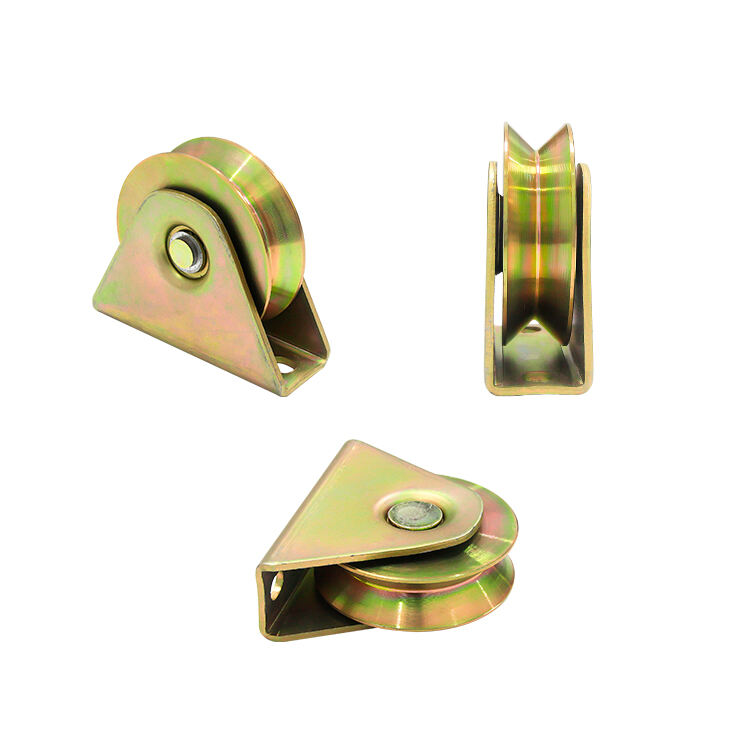The Basic Working Principle of Automatic Door Openers
Sensor Activation and Motorized Mechanisms
Automatic door openers represent smart technology that makes life easier and safer through sensor based operation. Most systems work by having sensors pick up when someone approaches. When these sensors notice movement near the door, they kick off whatever needs to happen to get the door moving. We see two main kinds of sensors in action here. Infrared sensors spot body heat and movement patterns while pressure sensors react to things like footfalls or shifts in air pressure around them. These sensors really matter because they keep doors working smoothly without hiccups, something that becomes super important in busy areas like hospitals where people need to get in quickly without touching anything. After the sensors do their job, motors take control next. Some doors slide along tracks while others swing outward, all designed to let folks pass through effortlessly no matter what kind of mobility challenges they might face.
Role of Control Units in Operation
The control unit sits right at the core of any automatic door setup, acting basically as its thinking center. When sensors detect movement or input, this component takes those signals and tells the door what to do next. What makes it so important is how it handles timing between different parts, making sure doors don't hang open forever or slam shut unexpectedly. Some newer models come with programming options that let them handle special situations, something that really matters in places like shopping centers or office buildings where people flow changes throughout the day. Businesses looking to tweak their door systems find these programmable features incredibly useful. They can set different opening speeds during rush hours versus quiet times, adjust sensitivity based on weather conditions, and even create access patterns for staff versus customers. These kinds of adjustments turn automatic doors into much more than just handy gadgets they become smart solutions that actually adapt to whatever environment they're installed in.
Types of Automatic Door Openers
Swing Door Operators for Accessibility
Swing door operators play a key role when it comes to making spaces accessible for people with disabilities, something that's pretty much required under ADA guidelines. Electric models make life easier for everyone who walks through them, especially at places where folks need quick access like hospitals, government buildings, and office complexes. The big plus is they take almost no effort to operate, which makes all the difference for someone using a wheelchair or trying to juggle groceries while opening a door. What's interesting too is how these door systems can be adjusted for different speeds. Some installations might want a slower opening for safety reasons, while others prefer faster movement during busy times. This flexibility means operators can tailor the system to match what works best for their particular location and customer base.
Sliding Gate Motors for Heavy-Duty Use
Sliding gate motors play a vital role in automatic gate systems, especially at commercial sites and industrial locations where strong security matters most. Built to handle substantial weights and sizes, these heavy duty gate operators work great for places like warehouses, manufacturing plants, and storage centers. What makes them stand out? They come equipped with weatherproofing capabilities and incorporate modern motor tech that stands up to all kinds of outdoor conditions over time. For business owners wanting to upgrade their security setup without constant maintenance headaches, investing in quality sliding gate motors offers both durability and operational efficiency that pays off month after month.

Revolving Doors in High-Traffic Areas
Revolving doors work really well in places with lots of foot traffic because they keep people moving smoothly without letting too much conditioned air escape. When folks walk through these spinning doorways instead of regular ones, there's less mixing between indoor and outdoor temperatures which saves money on heating bills during winter months and AC expenses when it gets hot outside. Most modern models come fitted with special sensors that stop the door from closing if someone gets stuck between panels, making sure everyone stays safe while passing through. That's why we see them everywhere now at major airports like JFK or LAX, busy mall entrances, and big office buildings downtown where hundreds pass through each hour. The convenience factor alone explains their popularity across commercial spaces dealing with constant crowd movement.
Key Components Powering Automatic Door Systems
Motion Sensors and Touchless Activation
Automatic doors rely on motion sensors to detect when someone approaches and open without needing anyone to touch them. This feature matters a lot for keeping places clean, particularly in hospitals and grocery stores where stopping germs from spreading should be top of mind. Touchless operation through these sensors has become really significant since the pandemic started. There are several options available for sensing movement too. Some systems use lasers while others go with microwave technology. Each type works differently but they all help doors respond properly so people don't have to worry about touching handles after sneezing into their hands or something like that. Most facilities find that investing in good quality sensors pays off in the long run because everyone stays healthier overall.
Electric Motors and Gear Mechanisms
Electric motors turn electricity into movement, controlling how fast and strong an automatic door moves when it opens or shuts. These motors work hand in hand with gears inside the system. The gears help everything run smoothly while also reducing friction that can cause parts to wear out faster over time. When talking about keeping doors working properly, modern tech is definitely important, but don't forget regular upkeep matters just as much. Maintenance routines should include checking both motor function and gear condition at least every six months. Lubrication points need attention too since dry gears will eventually fail prematurely. Think of it like car maintenance really - nobody wants their garage door slamming shut because something wasn't serviced on schedule.
Safety Features like Obstruction Detection
When it comes to automatic door systems, safety should always come first. Obstruction detection systems are pretty much essential for keeping people safe from getting hurt. The way these work is simple enough – sensors kick in right away if something gets in the way of the door moving, stopping it before anyone gets caught or injured. For places where lots of people pass through daily, following safety regulations isn't just good practice but necessary stuff too. Public areas need this extra layer of protection both legally and practically speaking. Manufacturers who focus on integrating better tech while sticking to established safety guidelines end up creating doors that open and close without issues most of the time, which means fewer incidents and happier customers overall.
Integration with Access Control and Security
Connecting to Keyless Entry Systems
Automatic door openers work really well when connected to keyless entry systems, which actually makes things much safer for everyone involved. When these systems are properly set up, they only let people in who should be there, usually via PIN codes or smartphone apps that verify identity. These kinds of setups make a big difference in places like office buildings or retail stores where lots of people come and go throughout the day. For business owners, going keyless means fewer chances someone gets in without permission while also making the whole entry process smoother for staff and customers alike. Most companies find their security improves significantly after switching to this kind of system.
Programmable Timers and Remote Access
Programmable timers play an important role in automatic door systems since they let people set exact times for doors to open and close throughout the day. The ability to program these timings helps save energy because it keeps doors shut when no one needs them open. Another handy feature comes with remote access options that work through smartphones or computers, which makes managing facilities much easier for staff members. These technologies really boost building security while making access control simpler overall. Facility managers find this particularly useful as they can monitor who enters different areas without needing to be physically present at all times.
Safety Standards and Compliance Considerations
ADA Requirements for Public Accessibility
Following the Americans with Disabilities Act (ADA) makes a big difference when it comes to making public areas truly accessible. When installing automatic doors, there are several important factors to consider. The control panel needs to be at just the right height so people can reach it easily. Doors should be wide enough to accommodate wheelchairs and other mobility devices. And they need to open with minimal effort from whoever is using them. Getting these details right helps make sure disabled individuals can navigate spaces comfortably. Meeting ADA requirements does more than just help those with disabilities though. It actually improves convenience for everyone who uses the space. Plus, businesses avoid potential lawsuits over inadequate accessibility features by staying compliant with these standards.
Emergency Protocols and Fail-Safes
Having good emergency plans matters a lot for automatic doors working right during emergencies. Most facilities should include those backup options such as manual release mechanisms so people can still get through if there's no electricity or something goes wrong with the system. Testing these safety features regularly makes all the difference. We've seen cases where buildings didn't practice enough and ended up with locked doors during actual emergencies. Regular drills help staff remember what to do and ensure everyone stays safe when technology lets them down.




